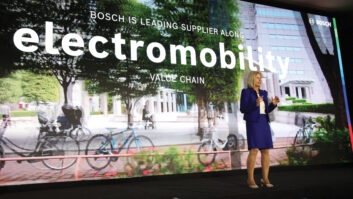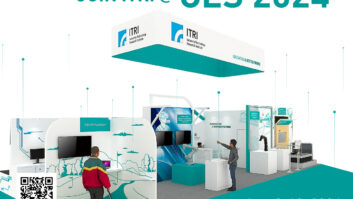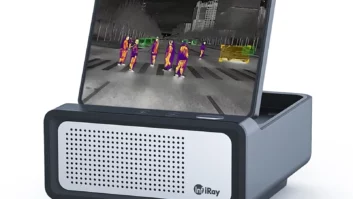More passenger vehicles are hitting U.S. streets with varying levels of self-driving capabilities, but it’ll be awhile before cars with the highest levels of SAE-defined autonomy — levels 3, 4 and 5 — reach U.S. roads in large numbers.
Autonomous-vehicle advocates, for example, expect production vehicles built from the ground up with embedded Level 4 technology will be available commercially by 2020 or 2021– but only in limited quantities and only for driverless car-hailing services or other fleets operating inside specific geo-fenced areas or along preprogrammed routes.
Related: Waymo CEO John Krafcik To Keynote CES 2019 Leaders In Technology Dinner
Meantime, vehicles retrofitted with Level 4 gear have already trickled onto streets for extensive testing, and commercial Level 4 ride-hailing services are coming online. Waymo was expected in late 2018 to roll out a commercial Level 4 ride-hailing service in the Phoenix area. In 2019, Intel and its Mobileye unit plan on-road beta tests of Level 4 ride hailing in Jerusalem, taking it commercial by 2022. In late 2019, GM plans a commercial launch in one city in select areas where routes are simple.
Stay up to date on all things CES with one-click access to TWICE’s CES Hub.
High Five
The timetable is farther out for the sale of Level 5 vehicles to consumers, and even then only in limited quantities, Veoneer research VP Ola Boström told us.
Unlike Level 4 vehicles, Level 5 vehicles drive themselves on any road anywhere in the U.S., thanks to a more extensive HD Map database and more powerful sensor arrays. These vehicles won’t need steering wheels or pedals.
The Level 4 developments follow the commercial launch in recent years of Level 2 technology in select U.S. passenger vehicles, including all Teslas and Volvos and select models from Cadillac, BMW and Mercedes. Level 2 vehicles cruise on highways at highway speeds, automatically staying in lane and matching traffic speed. Drivers can take their feet off the gas and brake pedals but must pay attention and keep their hands on the wheel.
Audi takes autonomy to the next level with its Level 3 Traffic Jam Pilot in the 2018 A8 in Europe, but Audi isn’t bringing the system to the U.S. for multiple reasons, including a need for updated federal regulations and a patchwork of state regulations that make it difficult to sell a vehicle nationwide.
Third Gear
With Level 3 systems, drivers can take their hands off the wheel and feet off the pedals, but only in a fully controlled environment, such as on a highway. Drivers don’t have to continuously monitor the road but must be ready to respond to a prompt to take over control.
As its name implies, Audi’s Traffic Jam Pilot can be used only in specific traffic-jam conditions. It controls acceleration, stopping, and staying in lane, but not if the vehicle travels faster than 37mph, and only on highways or multilane roads without red lights and with a barrier between oncoming lanes.
For its part, BMW is delaying a Level 3 launch until it gets the system to work at speeds up to 81 mph, the company has said. It plans a 2021 delivery.
Some technologies, however, are road-ready now, but some aren’t. Here’s a sample of what you’ll find at CES:
Clarion: In-car demos feature autonomous valet parking (allowing a vehicle to park itself after you get out), vehicle summoning (enabling a vehicle to leave a parking space and drive to you), and pothole detection and avoidance.
Ericsson/Veoneer: Veoneer’s automated driving technology will be combined with Ericsson’s cellular and Cloud technologies to enhance the reliability of Level 2-4 vehicles and get cars to their destinations faster and safer. For example, if police or road-maintenance laborers close a lane, beacons in their possession automatically send an alert to the Cloud for sharing with Veoneer-powered cars, enabling the cars to reroute themselves or prepare to change lanes without a passenger’s intervention.
At CES, Veoneer plans demonstrations and 30-minute test drives of its Level 4 Learning Intelligent Vehicle, or LIV (see photo above). Ericsson is providing a mini LTE-Advanced network equipped with some 5G features to deliver the alerts promptly.
Mobileye/Intel: In separate booths, Intel and Intel-owned Mobileye are displaying a Level 4 fleet vehicle using technology that will be deployed in a 2019 beta test of a ride-hailing service in Jerusalem. The companies are also showing their Road Experience Management (REM) car-to-Cloud solution. Mobileye vehicles detect changes to embedded HD Maps as they travel, then upload the changes to the Cloud for sharing with other Mobileye vehicles.













